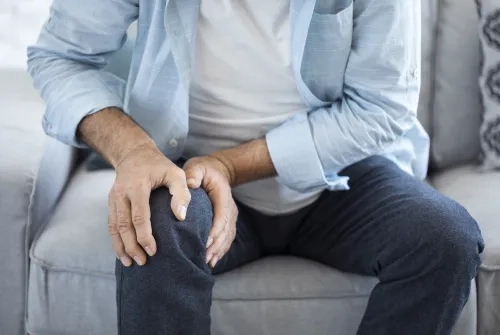Alo Yeditepe
Alo Yeditepe
Pain in the Legs May Be a Sign of Vascular Congestion
Yeditepe University Kozyatağı Hospital Cardiovascular Surgery (CVS) specialist said that with early detection of vascular stiffness, precautions can be taken against the risk of heart attack and stroke. One of the most important symptoms of congestion is a pain in the legs, so it is necessary to consult a specialist without wasting time.
Obesity, diabetes, hypertension, and smoking are important risk factors for vascular stiffness. It can cause a heart attack by holding the heart vessels, paralysis by holding the jugular vein, and limb loss by holding the leg veins. 30 percent of all stroke cases are caused by jugular stiffness. Yeditepe University Kozyatağı Hospital CVS Specialist drew attention to leg pain, vascular stiffness can be a signal.
"Sneaky Progress, No Signs"
Stating that vascular stiffness progresses mostly without symptoms, our specialist said that the first symptom is a pain in the legs and added:
"It is not possible to confuse this pain with other pains. Because its most prominent feature is that it emerges after a certain effort and brings the person to the point where they cannot walk. The patient describes this condition as 'I can walk for a maximum of 500 meters, then I have to stop due to pain'. However, since stiffness occurs in the lower veins in diabetic patients, pain may not appear in the first place. In the advanced stages of vascular stiffness, patients begin to complain of pain even during rest. It is harder to treat. However, leg pains caused by vascular stiffness do not mean that vascular stiffness is only in the legs. Even if they have not yet given symptoms, it is necessary to examine the heart and neck veins of these patients. Because atherosclerosis can affect all the vessels in the body. It is very important to evaluate the atherosclerotic involvement in vital heart and neck vessels in such patients. Therefore, pain in the legs is a symptom that must be taken seriously."
"Pain in the Leg Means the Blockage Has Started."
The appearance of pain in the legs indicates that vascular stiffness causes critical stenosis or obstructions. However, it is necessary to consult a physician to distinguish between different diseases such as pain and spinal canal stenosis. When the diagnosis of vascular stiffness (atherosclerosis) is made, the treatment is shaped according to the way the pain comes out and the impairment in the quality of life of the patient, our specialist said: "In some cases, the medication that allows more blood to flow to the leg may be sufficient. Thus, the patient's quality of life improves without the need for surgery. For more advanced cases, it is possible to provide a painless walk with the appropriate balloon, stent, or surgical methods. Especially in recent years, the use of non-surgical methods has become widespread with the opportunities provided by technology. Recently, surgeons have been intensively treating challenging cases. It is important to remember an important point here. These patients need to be treated like heart patients. Because the vast majority of patients die not from the complications caused by atherosclerosis in the leg, but due to a heart attack. If the patient is experiencing pain related to exertion, if there is leg pain that occurs while walking and prevents walking, a physician should be consulted."
This content was prepared by Yeditepe University Hospitals Medical Editorial Board.
”
See Also
- What is a Bypass? How is Bypass Surgery Performed?
- Surgical Treatment of Heart Valve Diseases
- He Went to the Hospital with Leg Pain, Discovered His Carotid Artery Was 95% Blocked
- Does an Aortic Aneurysm Show Symptoms ?
- What is an Aortic Aneurysm? How is it treated?
- Aortic Aneurysm
- You Can Be Protected from Varicose Veins During Pregnancy
- Drug Treatment is Priority Leg Vein Obstructions
- Cardiovascular Diseases
- Which Diseases Can Swelling in the Legs Indicate?
- Stay Away from Depression and Protect Your Heart!
- Do Not Let Varicose Veins Be Your Nightmare During Pregnancy!
- Frequently Asked Questions About Varicose Vein
Alo Yeditepe





